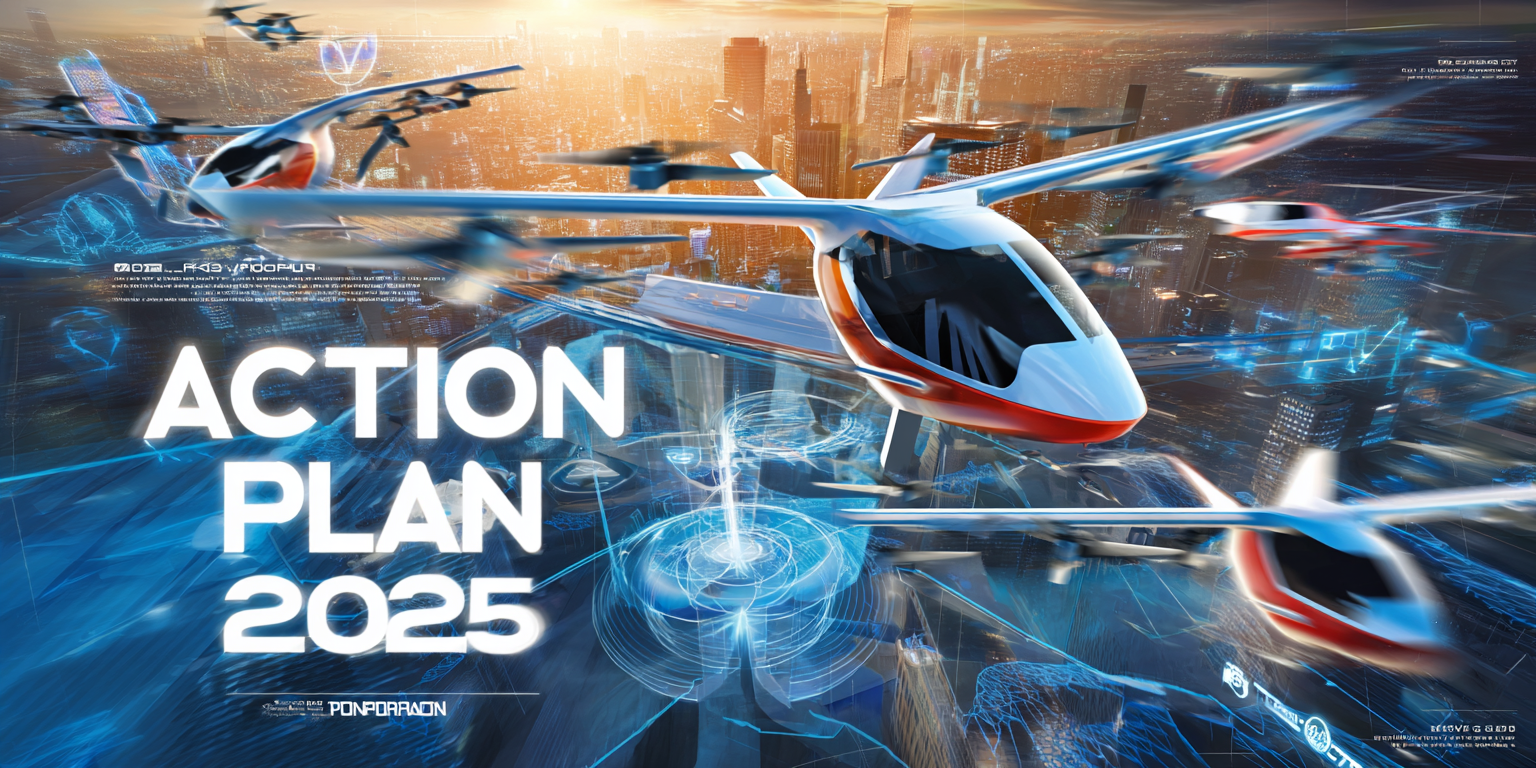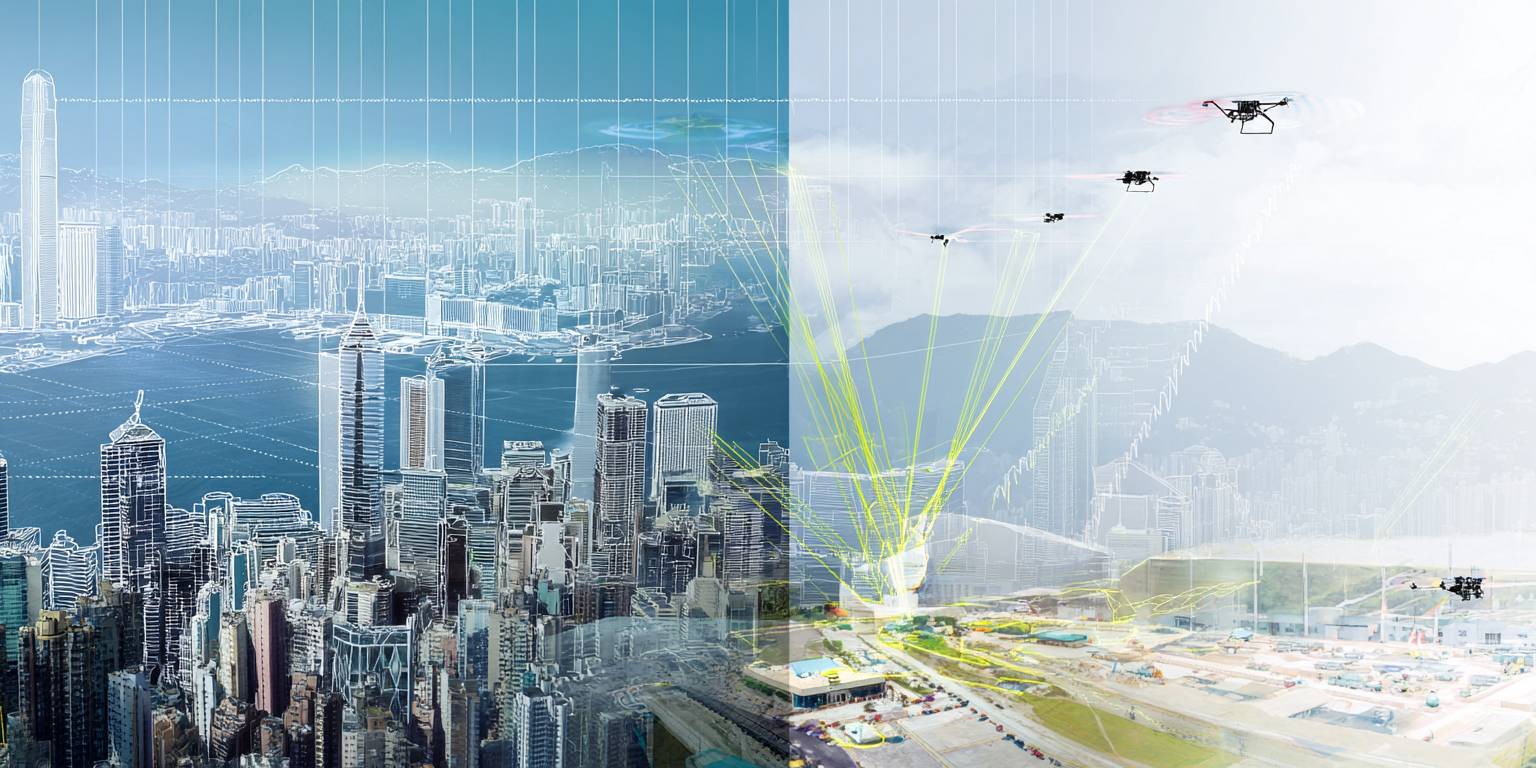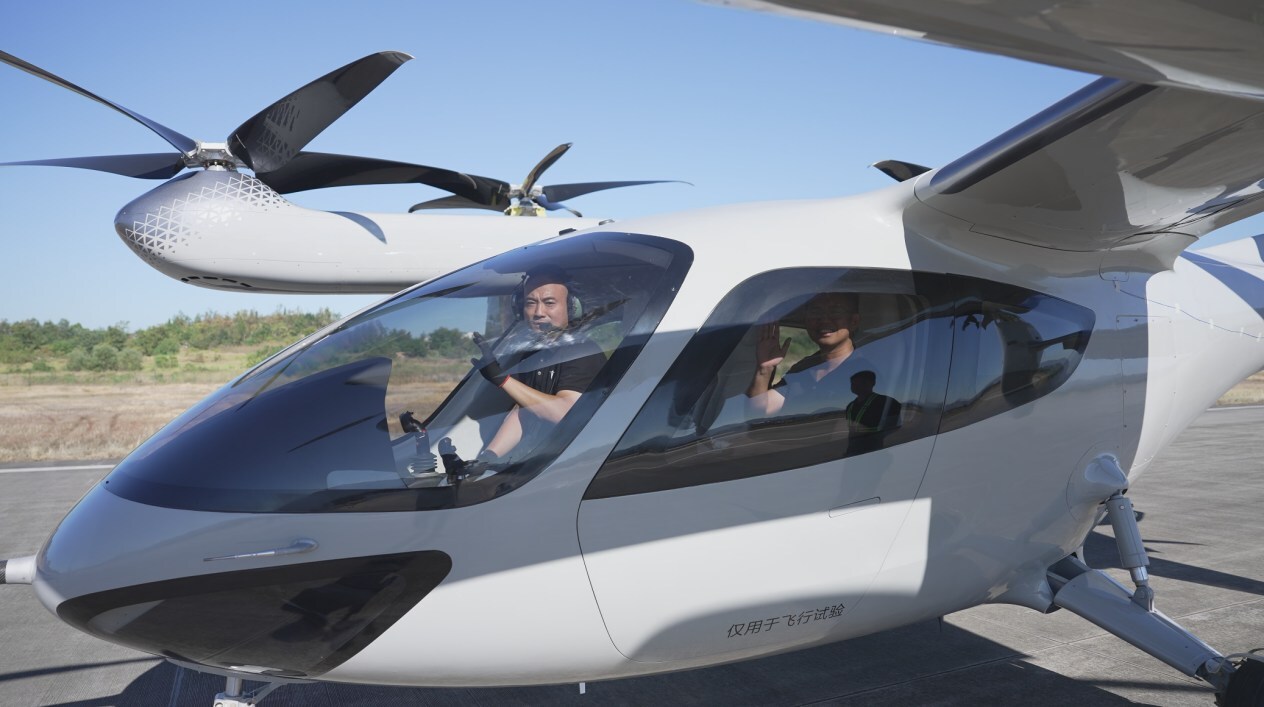The rapidly evolving fields of Advanced Air Mobility (AAM), the Low Altitude Economy (LAE), and Electric Vertical Take-Off and Landing (eVTOL) aircraft continue to develop specialized terminology and acronyms at an unprecedented pace. This comprehensive guide serves as an essential resource for professionals, regulators, investors, operators, and enthusiasts seeking to navigate the complex language of these innovative industries.
Understanding these acronyms is crucial for effective communication, accurate interpretation of specifications and certifications, regulatory compliance, and seamless interaction within the industry ecosystem. This 2025 edition incorporates the latest terminology reflecting current technological advances, regulatory developments, and operational concepts driving the future of aviation.
Core Industry Concepts:
AAM (Advanced Air Mobility)
An umbrella term for air transportation systems that move people and cargo between places previously not served or underserved by aviation using innovative aircraft designs and technologies. AAM encompasses urban, suburban, rural, and regional applications, utilizing various aircraft types including eVTOLs, traditional helicopters, and other innovative designs. The term is broader than UAM as it includes rural and regional connectivity.
LAE (Low-Altitude Economy)
A comprehensive economic ecosystem centered around civil manned and unmanned aircraft operations conducted primarily below 1,000 meters altitude, though some definitions extend to 3,000 meters. Most commercial operations typically occur below 400-500 meters due to regulatory and safety considerations. The LAE integrates aircraft with diverse industries through "LAE+" applications such as logistics, agriculture, healthcare, tourism, and urban transportation.
UAM (Urban Air Mobility)
The use of small, highly automated aircraft to carry passengers or cargo at lower altitudes in urban and suburban areas. UAM focuses specifically on city-centric applications using eVTOLs, drones, and other innovative aircraft for short-range, point-to-point transport including air taxis, emergency services, and cargo delivery.
Aircraft Types and Configurations
eVTOL (Electric Vertical Take-Off and Landing)
Aircraft powered by electric motors capable of taking off and landing vertically. eVTOLs are characterized by distributed electric propulsion, advanced battery systems, and often autonomous capabilities. Key configurations include:
Multirotor eVTOLs
Aircraft with multiple rotors (typically 4-12) providing lift and thrust, similar to large drones. Known for simplicity, stability, and ease of control. Examples: Volocopter 2X, EHang 216.
Lift + Cruise eVTOLs
Configuration using separate rotors for vertical lift and horizontal propulsion. Vertical rotors operate during takeoff/landing while fixed-wing propellers provide forward thrust during cruise. Examples: Joby Aviation S4, Wisk Cora.
Vectored Thrust eVTOLs
Aircraft using rotors or fans that can be directed to provide both vertical lift and forward thrust through tilting or rotation mechanisms. Offers high-speed and long-range capabilities. Examples: Lilium Jet, Archer Aviation Maker.
Tiltrotor eVTOLs
Aircraft with rotors mounted on rotating nacelles that tilt to transition between vertical and horizontal flight modes.
Tiltwing eVTOLs
Aircraft where entire wings tilt along with rotors to transition between flight modes.
STOL (Short Take-Off and Landing)
Fixed-wing aircraft designed to operate on significantly shorter runways than conventional aircraft, using aerodynamic enhancements to increase lift and reduce landing speeds.
eSTOL (Electric Short Take-Off and Landing)
STOL aircraft utilizing electric propulsion systems and battery technology for reduced environmental impact.
eCTOL (Electric Conventional Take-Off and Landing)
Electric aircraft designed for conventional runway operations, intended for short-distance travel and light cargo transport.
Propulsion and Technology
DEP (Distributed Electric Propulsion)
Propulsion system using multiple electrically-driven propulsors distributed across the aircraft structure, enabling greater design flexibility, improved efficiency, and enhanced safety through redundancy.
TeDP (Turboelectric Distributed Propulsion)
Hybrid system where gas turbines drive electric generators that power distributed electric propulsors, combining high energy density with electric propulsion benefits.Technologies
Battery
Semi-solid State Batteries:
Advanced battery technology offering improved energy density and safety
Air Traffic Management and Operations
UTM (UAS Traffic Management)
System for organizing, coordinating, and managing UAS operations, particularly BVLOS operations, through digital services and automation rather than traditional air traffic control.
PSU (Provider of Services for UAM)
Entity that supports UAM operators with meeting operational requirements, providing communication bridges between operators and regulatory authorities, strategic deconfliction, airspace management, and other essential services.
USS (UAS Service Supplier)
Service provider within UTM ecosystem responsible for supporting UAS operations through strategic deconfliction, flight planning assistance, and regulatory compliance support.
USSP (U-space Service Provider)
European equivalent of USS, providing U-space services to UAS operators within designated U-space airspace.
U-space
European system for managing UAS traffic through digital services and automation, designed to enable safe and efficient access to airspace for large numbers of UAS operations.
TBO (Trajectory-Based Operations)
Air traffic management concept using four-dimensional trajectories (latitude, longitude, altitude, time) for strategic planning and management of aircraft flows.
CDM (Collaborative Decision Making)
Joint government/industry approach to air traffic flow management through increased information sharing and coordinated decision-making among stakeholders.
Infrastructure and Ground Systems
Vertiports
Ground infrastructure designed for VTOL aircraft operations, including landing/takeoff areas, passenger facilities, charging stations, and maintenance capabilities.
FATO (Final Approach and Takeoff Area)
Defined area over which VTOL aircraft complete the final approach phase and initiate takeoff operations.
TLOF (Touchdown and Liftoff Area)
Load-bearing surface within the FATO where aircraft physically touch down and lift off.
VAS (Vertiport Automation System)
Automated system managing vertiport operations including aircraft scheduling, resource allocation, ground movements, and integration with air traffic management.
VMS (Vertiport Management System)
Digital system enabling efficient management of VTOL aircraft operations at vertiport facilities through real-time monitoring and adaptive scheduling.
Regulatory and Certification
CONOPS (Concept of Operations)
Document describing the characteristics of a proposed system from the viewpoint of an individual who will use that system, detailing operational procedures and requirements.
Remote ID (Remote Identification)
FAA regulation requiring registered drones to broadcast identification and location information during flight, serving as a digital license plate for drones.
FRIA (FAA-Recognized Identification Area)
Defined geographic areas where drones without Remote ID equipment can operate, typically at educational institutions or community-based organizations.
BVLOS (Beyond Visual Line of Sight)
UAS operations conducted without pilots maintaining constant visual contact with the aircraft, requiring special authorizations and safety systems.
Part 107
FAA regulation governing small UAS operations for non-recreational purposes, requiring remote pilot certification and aircraft registration.
sUAS (Small Unmanned Aircraft Systems)
FAA classification for drones weighing less than 55 pounds, encompassing the aircraft and all associated control equipment.
Data and Support Services
SDSP (Supplemental Data Service Provider)
Entity providing additional data services to support UAS operations, including weather, terrain, obstacle, and traffic surveillance information.
FIMS (Flight Information Management System)
System providing information services and data exchange capabilities to support UTM operations.
DSS (Discovery and Synchronization Service)
Component of UTM architecture enabling coordination and information sharing between service providers.
LAANC (Low Altitude Authorization and Notification Capability)
FAA system providing automated authorization for drone operations in controlled airspace.
Operational Concepts
MaaS (Mobility as a Service)
Digital platform integrating various transportation services, potentially including air mobility options, through a single interface for planning, booking, and payment.
ODM (On-Demand Mobility)
Real-time access to various transportation modes including air mobility services through mobile applications and digital platforms.
Air Taxi
On-demand passenger transport service using small aircraft, typically eVTOLs, for short-distance urban and suburban trips.
Autonomy (Technological)
Capability of systems to operate independently without human intervention, ranging from pilot assistance to fully autonomous operations.
Automation
Implementation of systems that reduce human involvement in aircraft operations through automated processes and controls.
Regulatory Agencies and Organizations
FAA (Federal Aviation Administration)
US regulatory authority for civil aviation, responsible for establishing rules and oversight for AAM, UAM, and UAS operations.
EASA (European Union Aviation Safety Agency)
European regulatory body responsible for aviation safety across EU member states, including AAM and UAM certification and operations.
CAAC (Civil Aviation Administration of China)
Chinese aviation regulatory authority leading global development of low-altitude economy policies and operational frameworks.
ICAO (International Civil Aviation Organization)
United Nations specialized agency establishing international standards and recommended practices for aviation safety and efficiency.
Market and Business Terms
CBO (Community Based Organization)
Organizations eligible to apply for FRIA designation and participate in recreational UAS activities under FAA recognition.
Industrial-scale Operations
Large-scale commercial UAM/AAM operations involving significant fleet sizes and complex operational networks.
Passenger-carrying Operations
Commercial transport of people using AAM aircraft, requiring specific certification and operational procedures.
Cargo Operations
Transport of goods and materials using AAM aircraft for logistics and delivery applications.
Emerging Technologies and Concepts
5G/6G Networks
Advanced communication technologies enabling real-time data exchange, dynamic airspace management, and high-precision positioning for AAM operations.
Digital Twin Technology
Virtual representations of physical aircraft and systems used for simulation, testing, and operational optimization.
High-Precision Positioning
Centimeter-level navigation accuracy enabling safe operations in dense urban environments and complex airspace.
Dynamic Airspace Management
Real-time reconfiguration of airspace allocations based on demand, weather, and operational requirements.
Safety and Environmental Terms
Sustainability
Integration of environmental, social, and economic considerations in AAM development to minimize negative impacts while maximizing benefits.
Noise Mitigation
Technologies and operational procedures designed to reduce aircraft noise impact on communities.
Environmental Impact Assessment
Evaluation of AAM operations' effects on air quality, noise levels, and overall environmental health.
Safety Management Systems (SMS)
Comprehensive approach to managing safety risks through systematic identification, assessment, and mitigation of hazards.
Future Concepts
Fully Autonomous Operations
Complete removal of human pilots from aircraft operations, relying entirely on automated systems and ground-based oversight.
Urban Air Traffic Networks
Integrated systems of air corridors, vertiports, and traffic management enabling large-scale urban air mobility.
Intermodal Connectivity
Seamless integration of air mobility with ground transportation systems for comprehensive door-to-door travel solutions.
Smart City Integration
Incorporation of AAM services into broader smart city infrastructure and data management systems.
Conclusion
This comprehensive acronym guide reflects the current state of AAM, LAE, and eVTOL terminology as of 2025. The industry continues to evolve rapidly, with new concepts, technologies, and regulatory frameworks emerging regularly. Regular updates to terminology and acronyms will be essential as these fields mature and commercial operations expand globally.
The successful deployment of advanced air mobility depends not only on technological innovation but also on clear communication and shared understanding among all stakeholders. This guide serves as a foundation for that shared understanding, enabling more effective collaboration across the ecosystem of manufacturers, operators, regulators, infrastructure providers, and service suppliers working to make the promise of advanced air mobility a reality.
This guide represents the terminology landscape as of June 2025 and will be updated regularly to reflect ongoing developments in the rapidly evolving AAM, LAE, and eVTOL industries.




